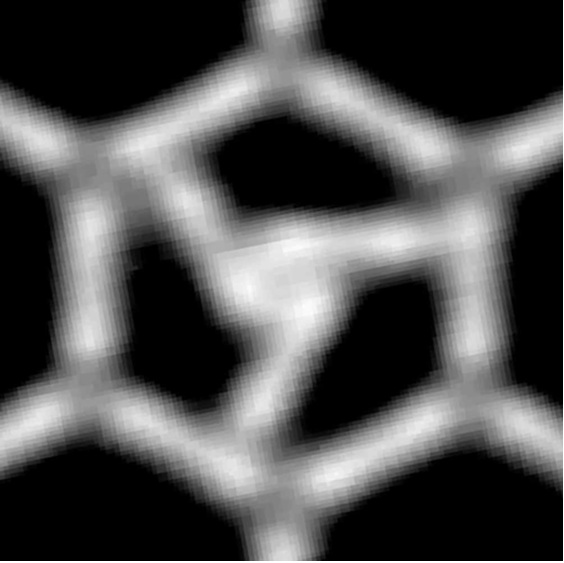A team of researchers from Germany managed to trap stick-like molecules in a two-dimensional network in a way that leads to the receipt of nanorotor structures.

A team of researchers from Germany managed to trap stick-like molecules in a two-dimensional network in a way that leads to the receipt of nanorotor structures.
Nature itself provides us with a model to imitate for such self-organizing systems. In this way, proteins bring the chemical reactants closer so that reactions can occur between them - reactions that only occur in a state of great proximity. These properties are used in chemical catalysts: reactants present on a catalytic surface "find" each other on the surface of the surface that catalyzes the reaction between them. However, the vision of using such self-organizing capabilities for the creation of nanomachines is still a dream for the future.
The developed rotors are an important step in the right direction. In the first step, the researchers synthesized an extensive nanometer lattice through a reaction between cobalt atoms and rod-like molecules on a silver surface. The result obtained was a very stable honeycomb lattice with extremely high regularity and periodicity. Similar to graphene, the material whose discovery was awarded this year's Nobel Prize, this lattice is a single atom thick.
When the researchers added more building block molecules, the "sticks" clustered independently, often in groups of three, within a honeycomb-like cell, while adjacent cells remained empty. These molecules had to have a reason to organize themselves into threes. Thanks to a microscopic method (STM) the scientists were able to understand why this occurs. The three molecules are arranged in such a way that each of their nitrogenous ends is directed towards a hydrogen atom attached to the benzene ring. This arrangement, a sort of three-bladed rotor, is so energetically favored that the molecules maintain this structure even when the system is heated and the excess energy causes them to rotate.
Since the honeycomb-like cell is not round, but hexagonal, two arrangements are possible for the rotors in which they can be organized as a result of interactions between the outer nitrogen atoms and the hydrogen atoms of the cell walls. In addition, the three molecules can be arranged clockwise, or counterclockwise. In experiments conducted at strictly controlled temperatures, the scientists were able to freeze all four forms and examine them in more detail. In this way, they were able to determine the threshold energy for which the temperature allows rotation of the molecules.
"We hope that in the future we can extend these simple mechanical models to optical and electronic switching devices," says Professor Johannes Barth. "We can determine the desired size of the cell, we can add other molecules and examine their interactions with the surface and the cell wall. There is great potential in these independently organized structures."
More of the topic in Hayadan:

One response
Sounds better and more practical than me!
So the idea of generating electricity from an arrangement of the structure of the material no longer sounds so illusory.. That's probably where the solution to this and to many devices and problems from different fields will come, there's nothing to talk about. The future is in nano-tebology just as biology is built on tiny cells or nano cells in our lips!
In my opinion, this also brings the "man closer to a machine" but in a combination that was not thought of or could not be thought of but twenty years ago... and it will be a combination of tiny nano parts inside the human body for strength purposes but for the purpose of sensing out and activating parts external to the body even automatically and more. In short, it's getting more and more interesting with the nano!